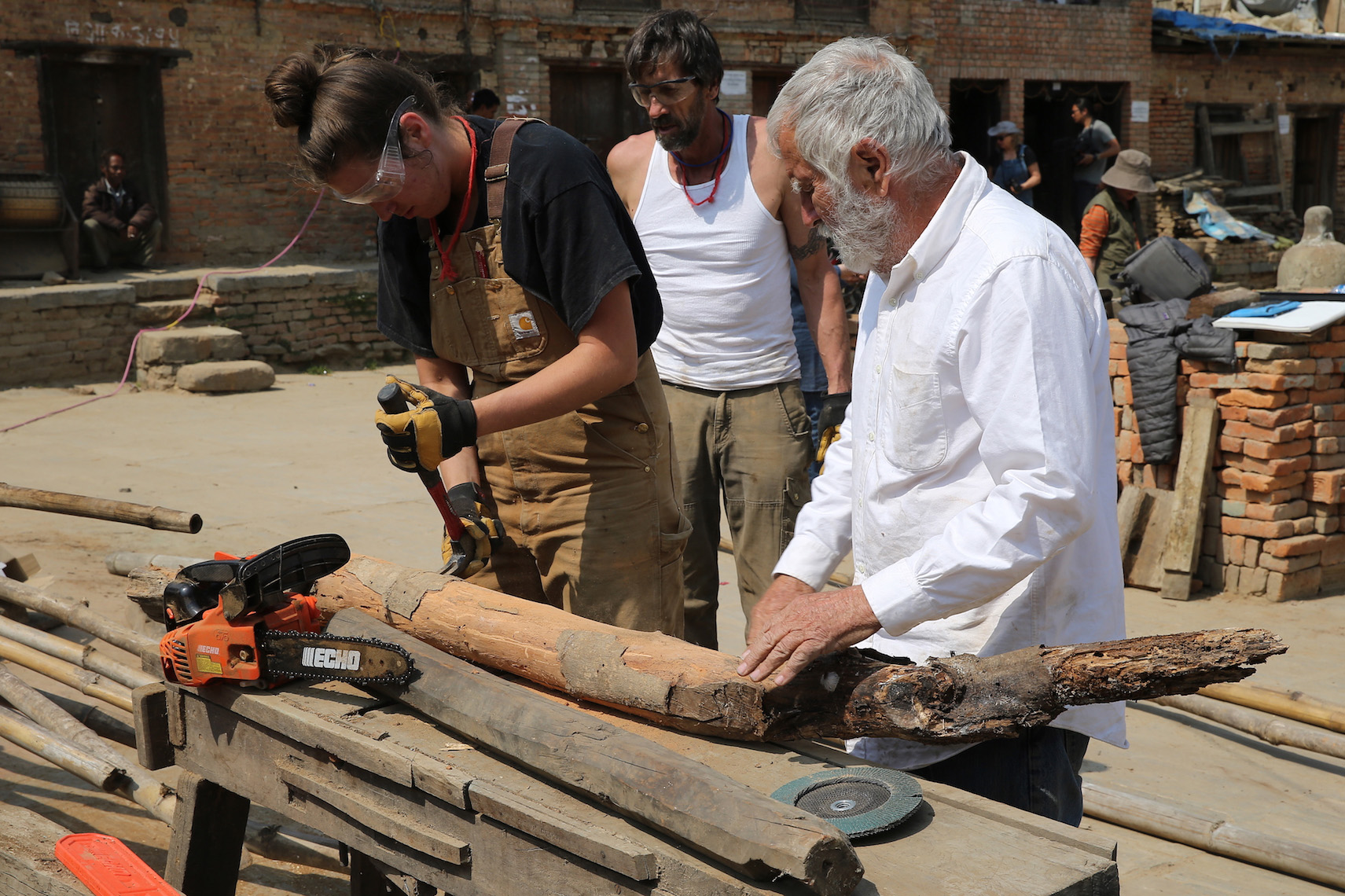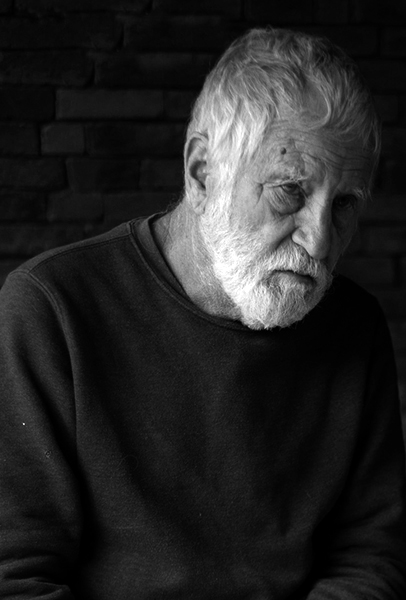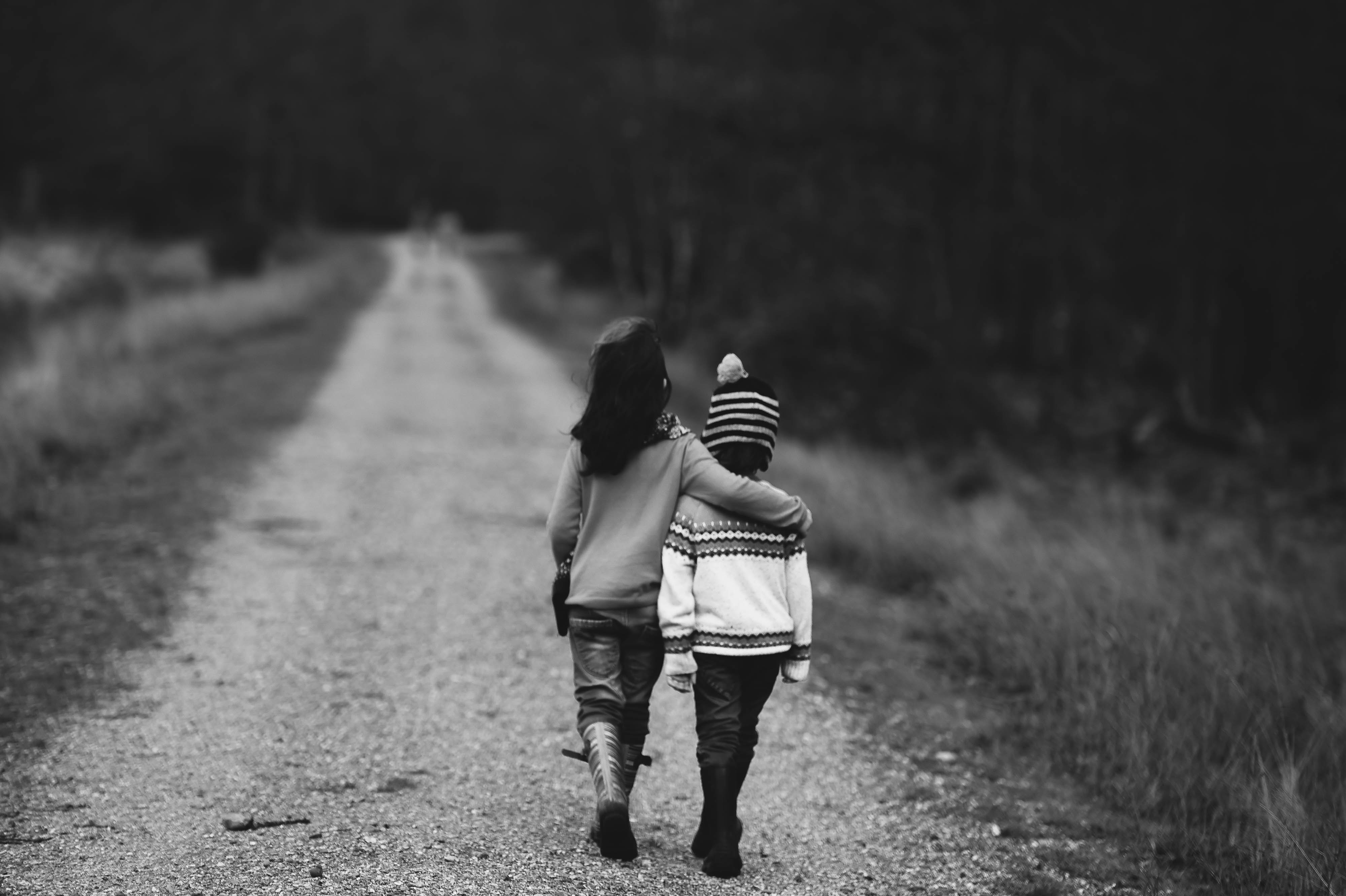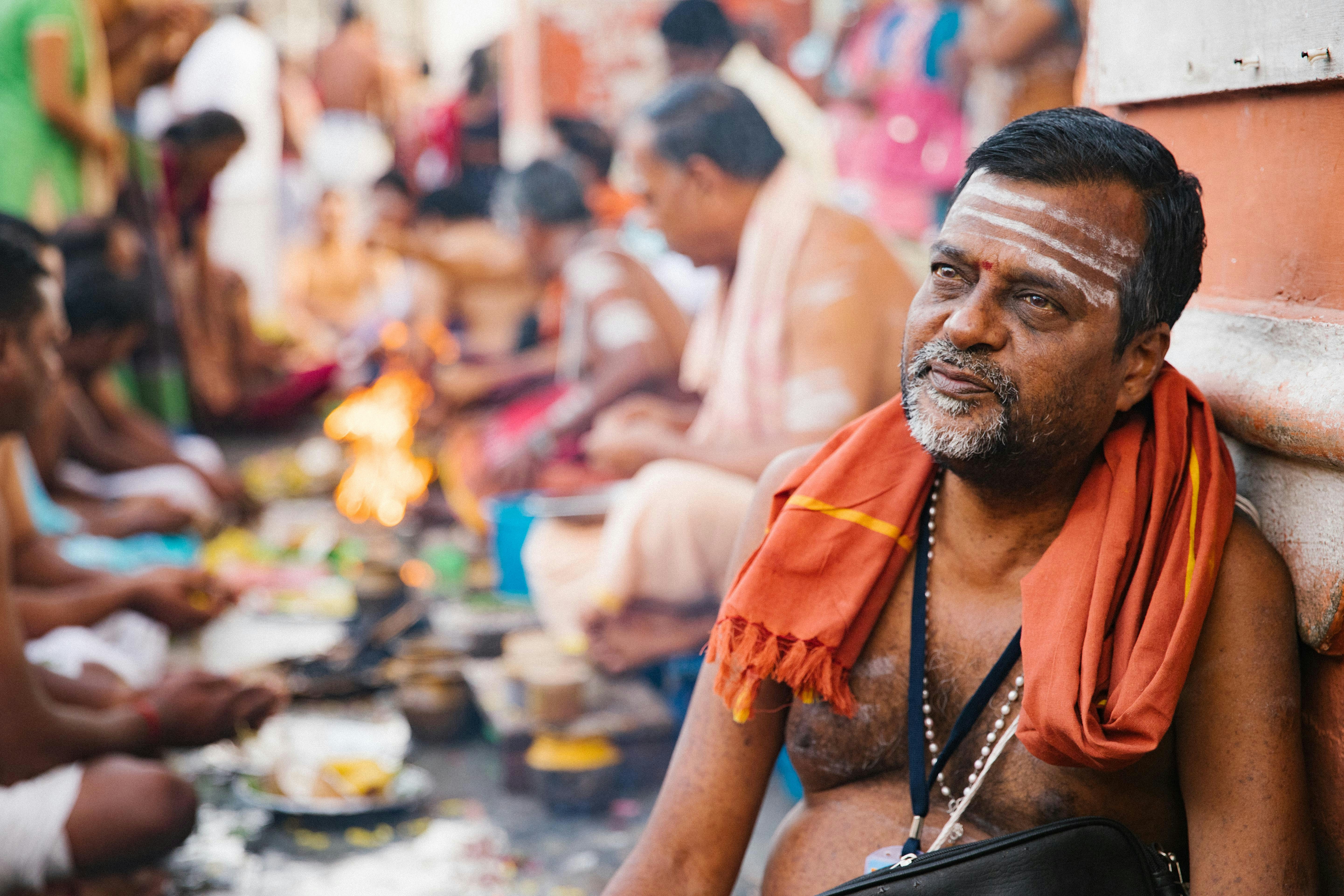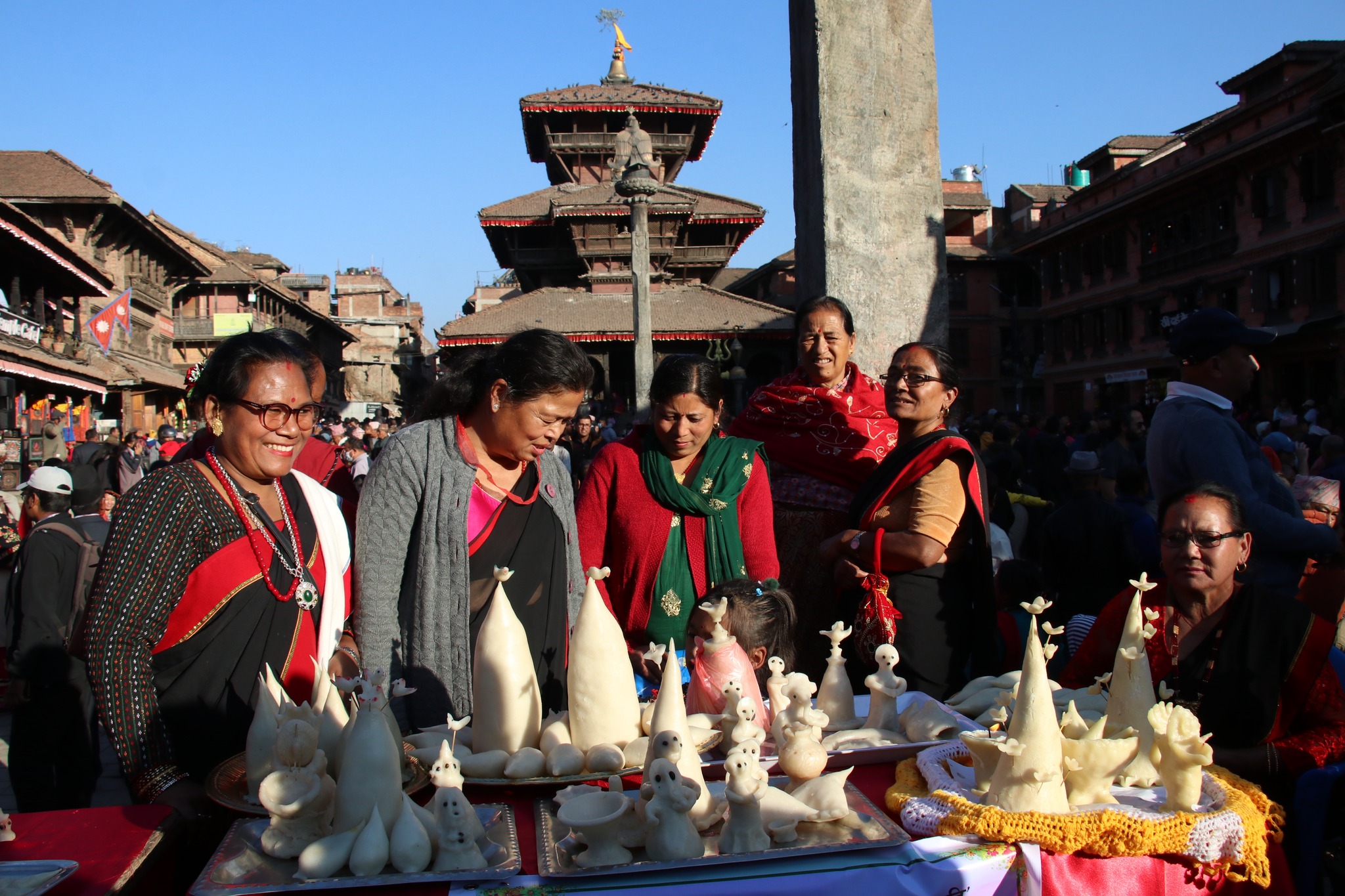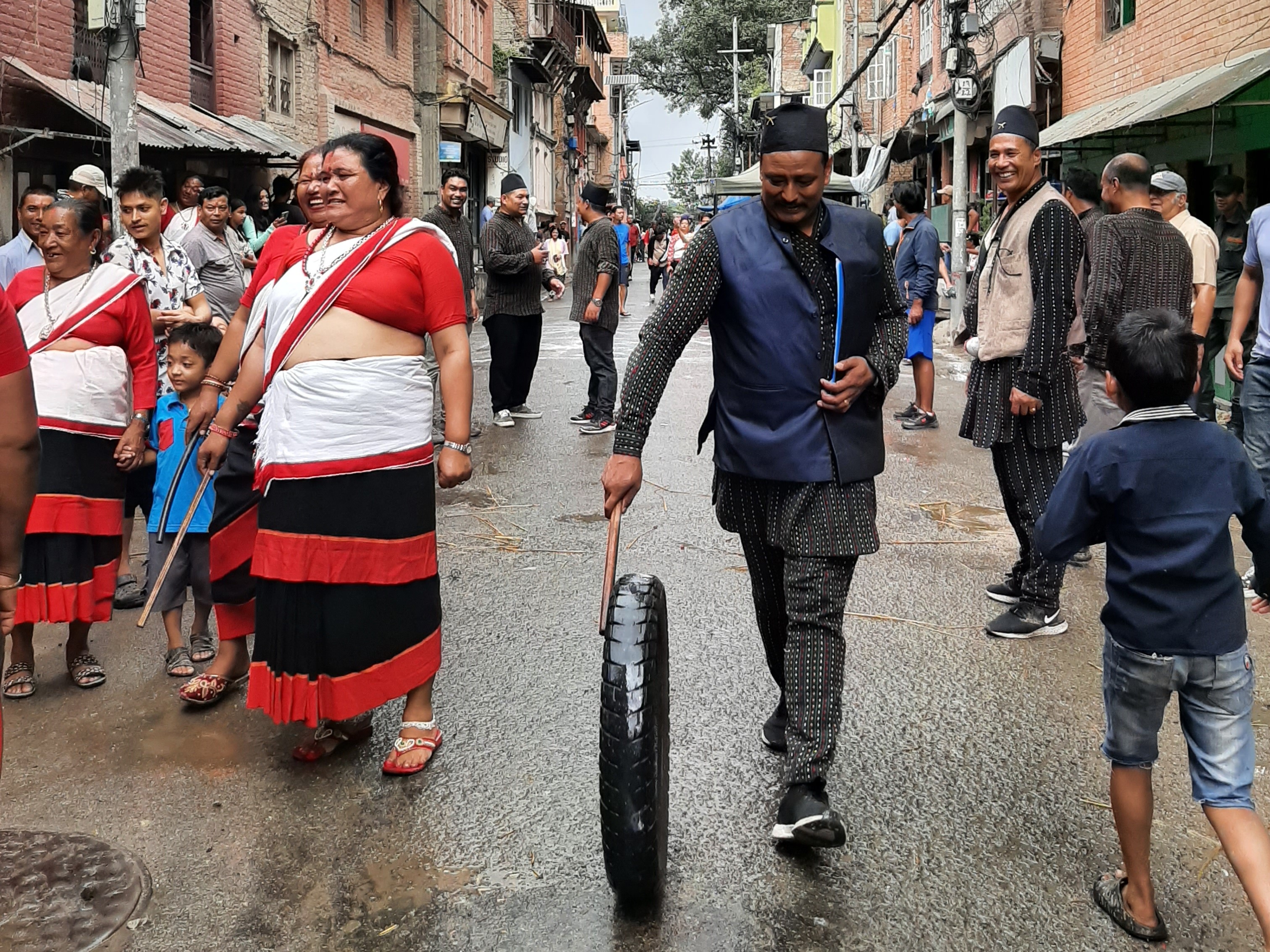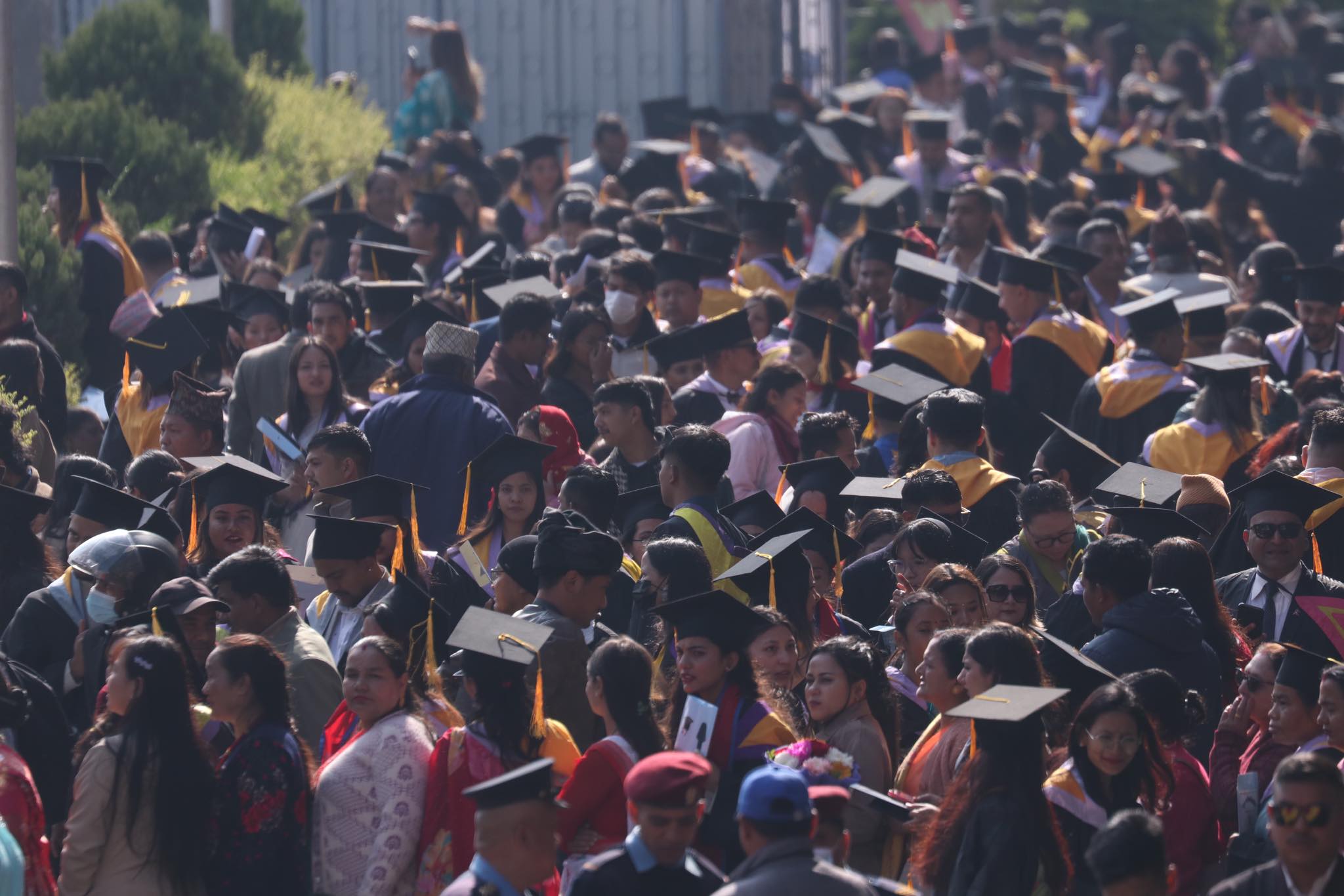David Best is an internationally renowned American sculptor. He is known for building immense temples out of recycled wood sheets (discarded while making toys and other punch-outs) for the Burning Man festivals, where they are then burnt to the ground. Best is in Kathmandu to take part in the World Wood Day celebrations being organised by the International Wood Culture Society in association with IUCN and the Nepal Government. He is collaborating with local artisans in Bungmati to build a wooden temple.
Onlinekhabar caught up with Best during his visit to Bungmati recently.
Courtesy: International Wood Culture Society
What is the Burning Man all about?
When you ask a Hindu what Hinduism is about, he may say it’s about the million gods it has. But he won’t be able to tell you exactly what it is. In the same way, I can’t tell you what the Burning Man is about, although I have been going there for years. Even after 14 years, I don’t understand it.
What has your role been like in the Burning Man?
We had a festival that had fire dept, a police department, and a cafe; essentially we built a city where we could. We did have a place for the people to reflect on people who are no longer here with us. It evolved into a lot of things, and I go around the world doing that.
Why burn the temple?
Three hundred years ago, maybe a wood carver’s son committed suicide in Bungmati. When he was carving something, his emotions found way into his work. Maybe an art collector comes by someday and takes it with himself to auction it in New York. It would sell, not just because it is Nepalese art, but because it has a story associated with it.
At the Burning Man festival, we got a letter a soldier in Vietnam had sent to his family before his death. The family was ready to give us the letter so that we could burn it with the temple because they knew that the letter would not become a souvenir one day. When we burn something, we burn it to protect it, not to destroy it.
You are known around the world as a sculptor. But your Burning Man temples were made of wood.
I would say that at this point in life, I am not a sculptor. I am part of a team that builds things that have a greater purpose. I am interested in how the things we build interact with the society and leave an impact.
Many artists would say that they would like their work to become immortal. But you build temples and then raze them. Do you not want your work to be seen by the future generations?
No, no no, look outside, there was temple (Bungmati) there. Now it’s no longer there. Nothing is permanent. You know, they melt bronze to make weapons, iron to make swords.. nothing is permanent. As a young artist, you are told that you would be paid less because your work will live for ever and that makes up for it.
I understood this through my personal experiences. There was someone who bought my work, and her drunk husband smashed it to pieces.
So, I think what impact we can leave on a society is more important than whether our art survives or not. I think the turning point in my career came when I was creating art just for myself. I met people living with cancer and AIDS, at a time when people would not talk about these things. I had a friend who died because he had tumor.
How does this project in Nepal fit into the larger scheme of things?
I came to Nepal thinking that I would leave some impact on the people. But now I see that Nepal has had a bigger impact on me than what I’ve had on the country.
When I came here and looked at piles of wood, I was reminded that 50 years ago, Westerners came to this country with hammers and chisels and stole its relics; museums all over the world have pieces of Nepal. What we have left here is the bones of the relics, and they too are broken. I am going to make something out of the bones? Am I vulture preying on something? These are the questions I am grappling with.
I don’t think I will be able to leave an impact here.
Could you tell us how Nepal has impacted you?
I’ve been here for a few weeks. The other day, I met a man with a kid. I stand out from the crowd because of my appearance. The little kid said ‘Namaste’ to me without even knowing who I was! Where does that spiritual generosity come from in a country that is poor and has a sick government? That is what impacted me. For me the temples are just postcards. For me, restoration of non-living culture when the living culture is starving is not appropriate.
The other thing is that in a city like Bungmati that’s been damaged by the quake, you don’t feel that a calamity has happened here. An outsider could think that things have always been this way. This is different from other places I have been to. Take for example Detroit in the US which took a hit in the financial crisis. You could realise that the city was in ruins just minutes after entering the city.
The nostalgia for the good old days should not divert the attention of the government from building clinics, schools and hospitals.
And this is coming from an artist?
Yes, I can live without a pretty temple.
To conclude, do you think Nepal should focus on restoring, reconstructing or building something new?
I am for building something new! The youth are the future of Nepal. Young architects should push the historians aside. I think the future should be modern and contemporary.




